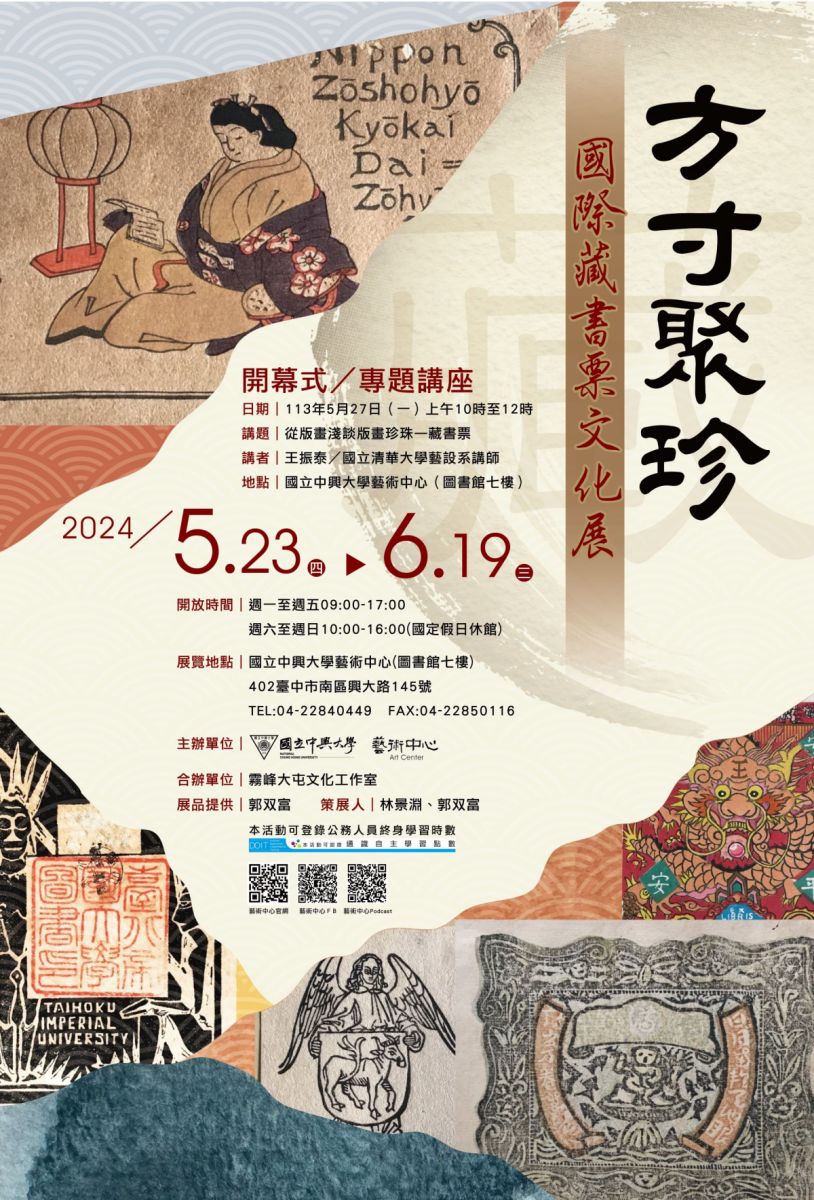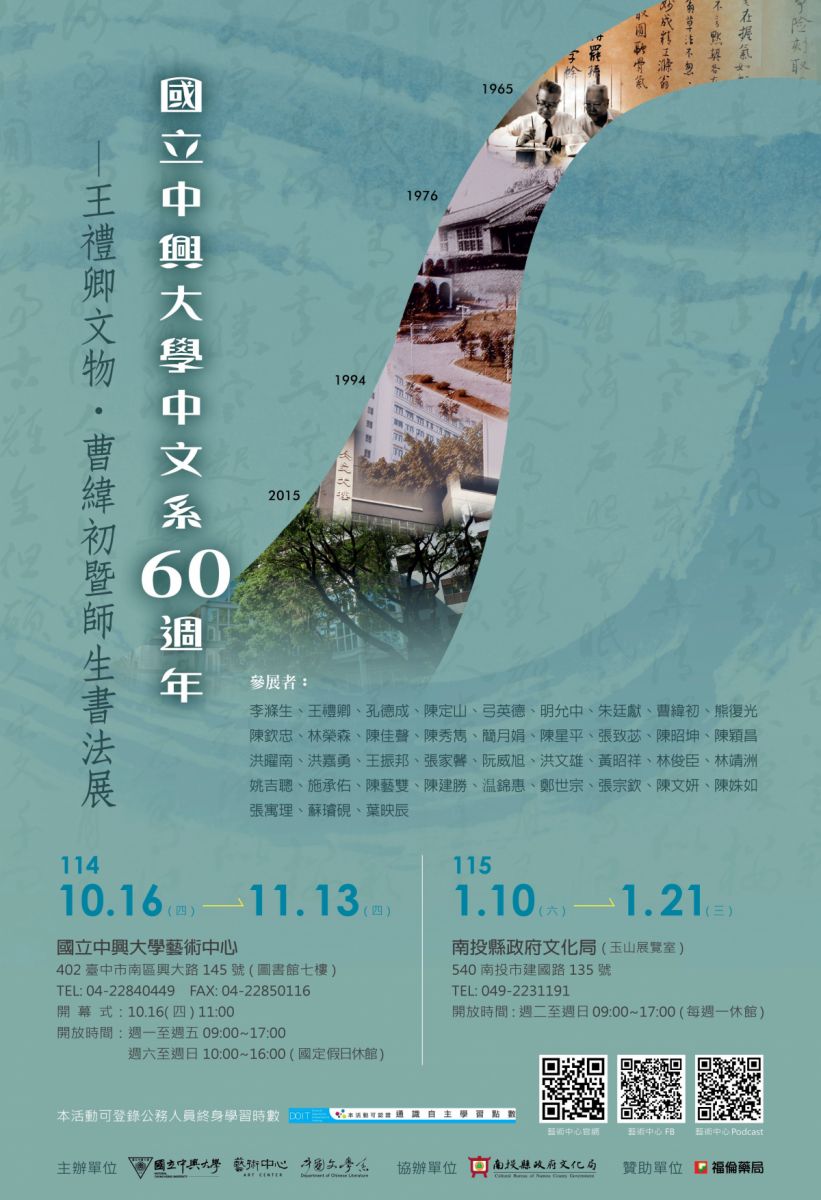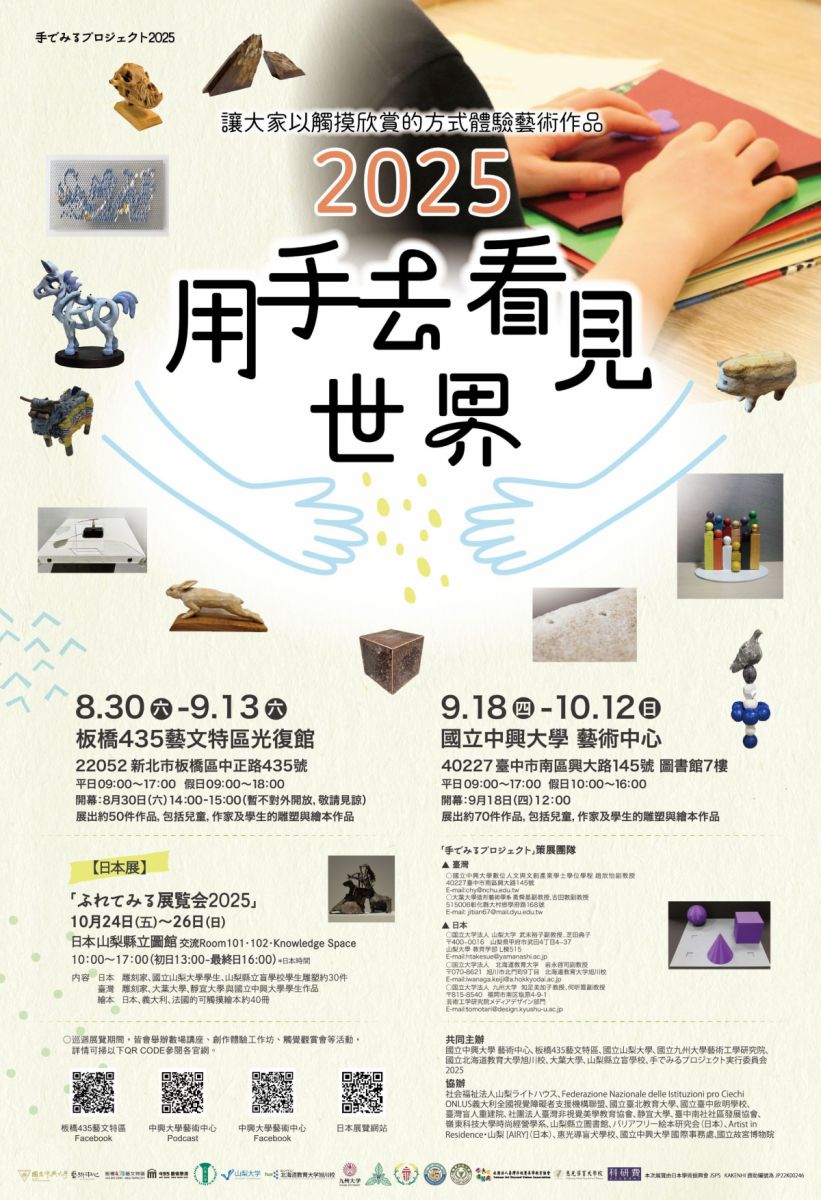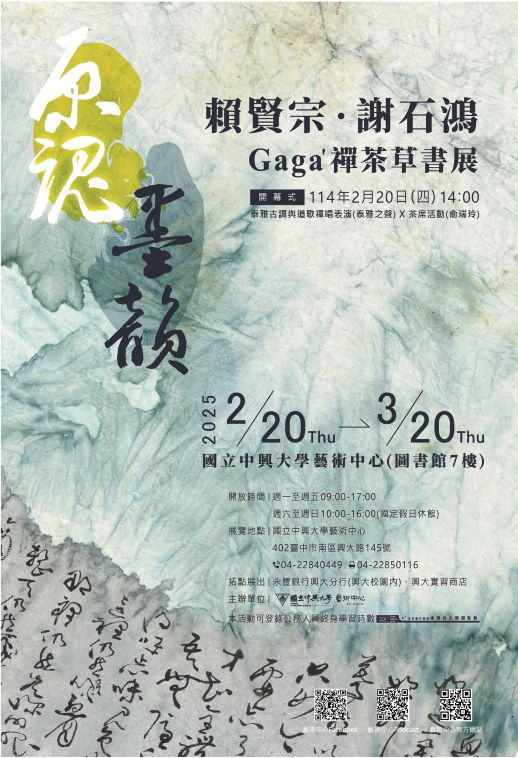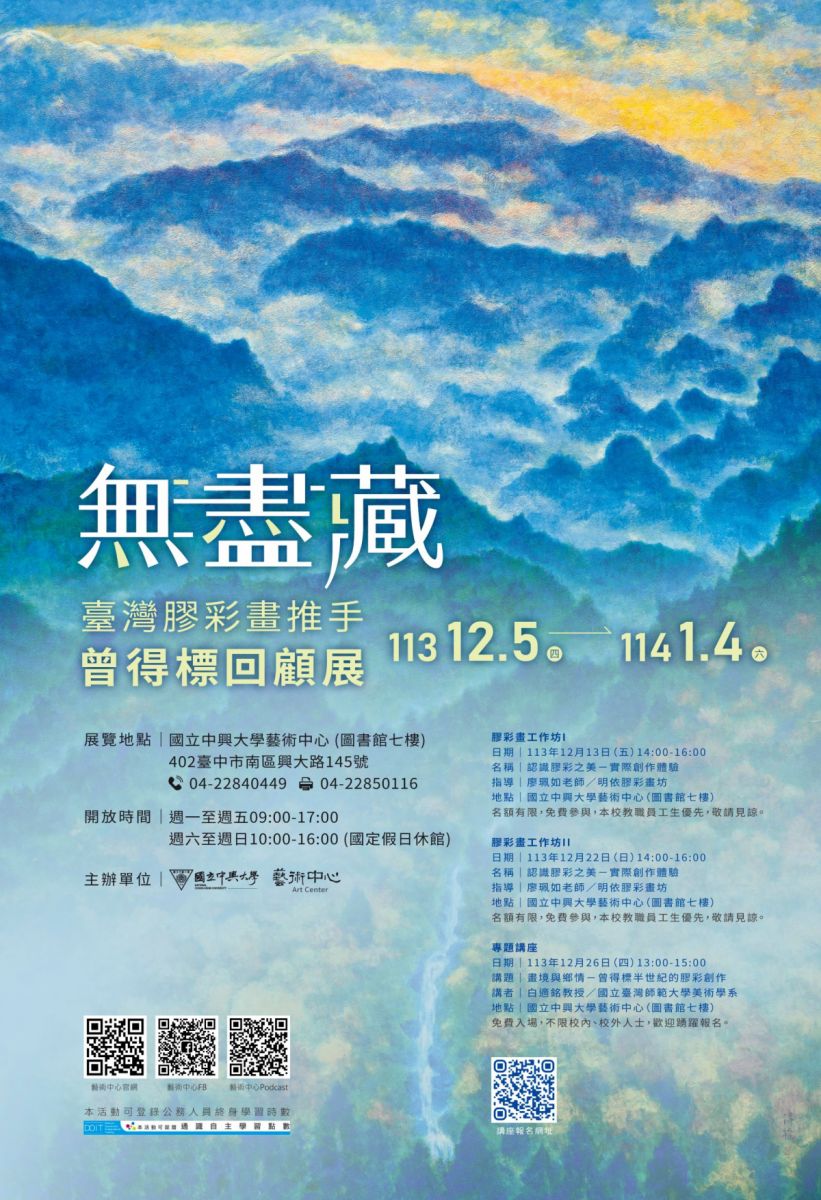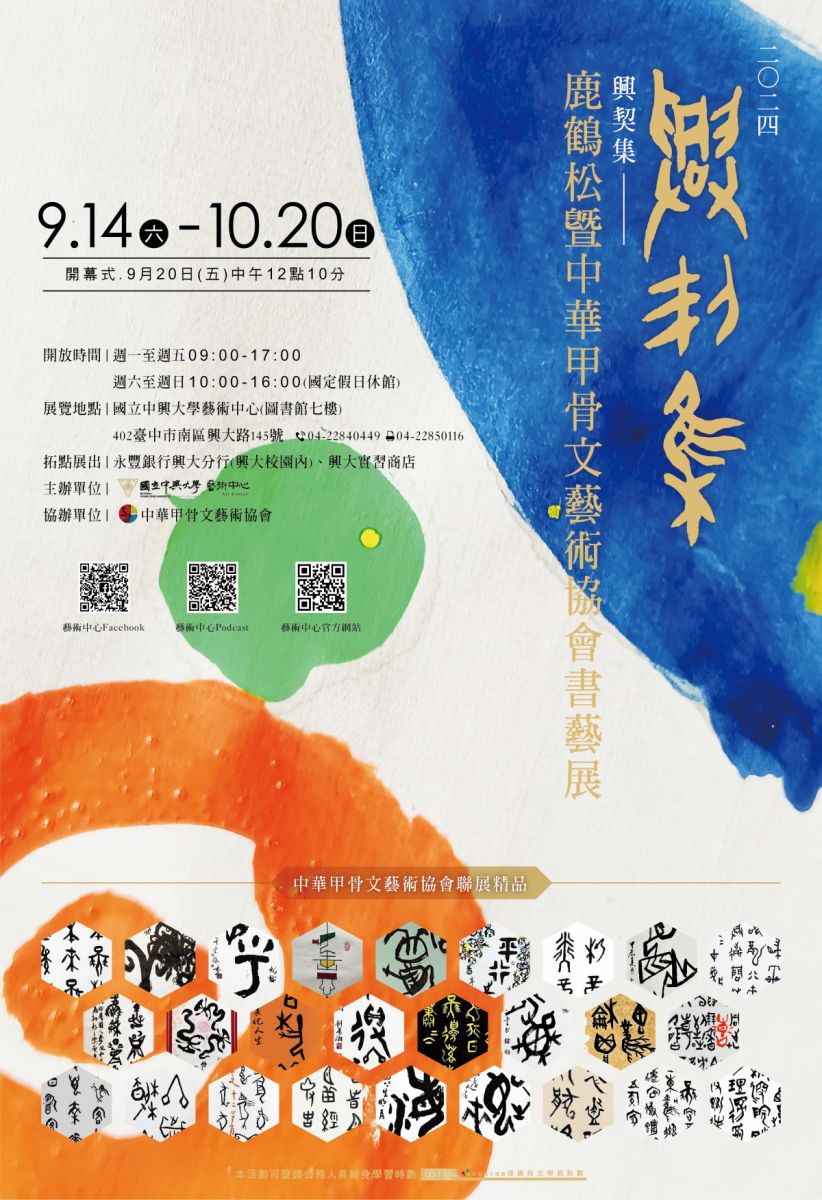The Art Center of National Chung Hsing University is hosting the “Treasures in a Square Inch: Exhibition of Bookplate Culture” from May 23rd to June 19th, 2024. Through the small bookplate, one can glimpse the history of printing technology development since the European Renaissance.
Before the 15th century, handwritten books were rare and difficult to obtain, primarily owned by royalty, religious figures, or nobility. To show ownership, monks who made books would engrave specific noble patterns onto wooden blocks, transferring them onto book covers as symbols. With the rise of printed books replacing handwritten ones, intellectuals who owned books designed bookplates, sticking them onto the title pages to mark ownership, thus becoming an art form. By the 18th century, as book production became industrialized, book quantity surged, leading to widespread book ownership. People started collecting bookplates and studying their varied imagery, stories, and textual meanings, transforming bookplates from mere identifiers to culturally valuable art with collectible value.
Bookplates are also known as "pearls in prints," "jewels on paper," or "butterflies in books." Stuck inside and outside book covers, serve as identification for the books. Generic bookplates are mass-produced with various designs. For example, Latin phrases like EX-LIBRIS mean "from the library of," "this book belongs to," or "given by," leaving space for the purchaser to write their name. However, names alone may not fully reveal the book owner's identity or status. Therefore, collectors often commission artists to create custom bookplates, designed from their professions, interests, religion, and culture, showcasing uniqueness and originality. With careful arrangement by artists, bookplates reflect the owner's style and reading attitude.
Eastern and Western cultures have distinct methods of book labeling, due to the differences in book-collecting habits and the types of paper used in books. The former mainly utilizes the art of seal carving for book stamps, while the latter uses the art of printmaking for bookplates. Each has its merits, but they both reflect a deep love for collecting books. The upcoming "Bookplate Exhibition" at the Art Center, curated by renowned collector Mr. Guo Shuang-fu and Professor Lin Jing-yuan, showcases various bookplates. Despite their small size, these works undergo processes similar to regular printmaking, yet they are even more delicate, showcasing the history and beauty of bookplates over the past five centuries. Welcome everyone to visit and appreciate the exhibition.

